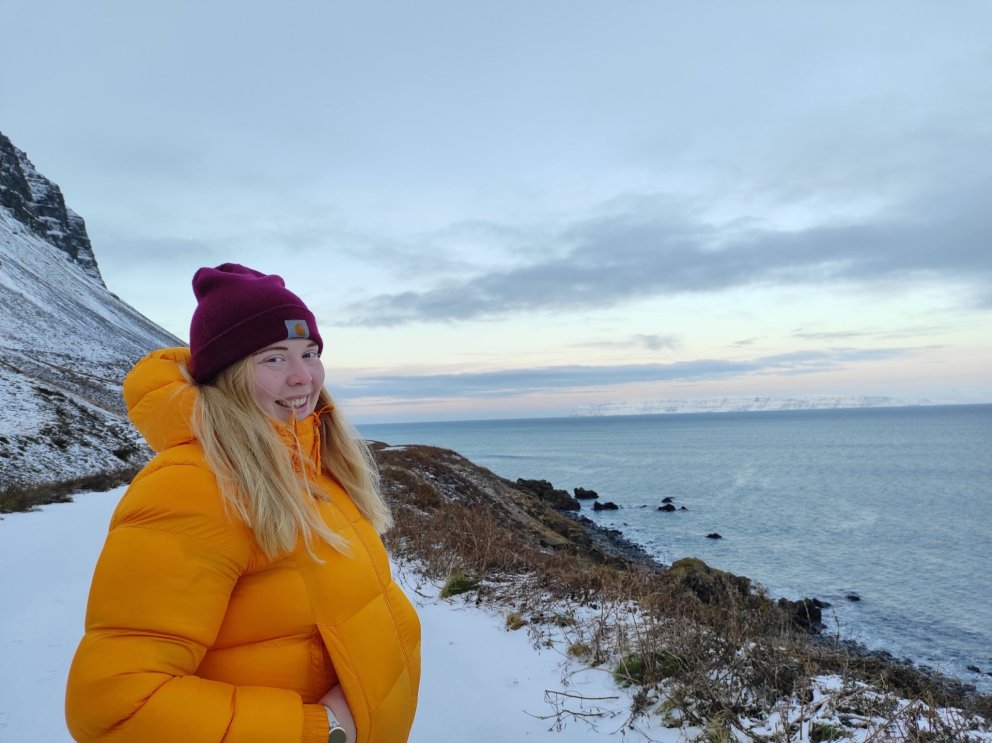- Research
- Fish tagging
- Lumpfish research
- Oceanography
- Seabed mapping
- Arnarfjörður
- Drekasvæði
- Ísafjarðardjúp
- Jökulbanki
- Jökuldjúp
- Kolbeinseyjarhryggur and adjacent area
- Kolluáll
- Langanesgrunn
- Látragrunn
- Nesdjúp
- Reykjaneshryggur and adjacent area
- Selvogsbanki
- South of Selvogsbanki
- South of Skeiðarárdjúp
- South of Skerjadjúp
- Southeast of Lónsdjúp
- Southwest of Jökuldjúp
- Suðausturmið
- Suðurdjúp
- Vesturdjúp
- East of Reykjaneshryggur
- Vestfjardarmid
- Seal research
- Whale Research
- Advice
- About
Seminar April 4th: The Establishment of European Flounder in Iceland
02. April 2024
Theresa Henke, a PhD student at the University of Iceland Research Centre of the Westfjords will introduce the main findings of her research on the “Establishment of European flounder (Platichthys flesus) in Icelandic waters”.
Time: April 4th, 12:30-13:00
Place: Ground floor meeting hall in Fornubúðir 5, Hafnarfjörður
Stream: Click here to join the meeting on Teams
Lecturer's Language: English
The establishment of European flounder in Iceland
As highlighted by IPBES´ recently published landmark report, biological invasions represent one of the biggest threats to global biodiversity and are expected to continuously increase over the coming decades. Tackling the rising numbers of introduced species and their wide-ranging impacts innovative approaches as well as the development of effective management strategies are needed. In my PhD research, I applied interdisciplinary approaches to improve the knowledge on the establishment of the European flounder (Platichthys flesus) in Icelandic waters as well addressing questions in the wider field of invasion science.
The European flounder is a flatfish species native to the coastal waters of western Europe. In 1999, this species was first officially documented in Iceland after it was caught in the southwest. Since then, the European flounder has rapidly spread to most parts of the country where it is predominantly found in estuaries but also frequently enters the freshwater habitats of rivers and lakes. This has raised concern about its overlap with, and potential impacts on, native salmonid species. Applying microsatellite analysis, we have identified the Faroe Islands as the most likely origin from where European flounder has arrived in Iceland. These results have raised the question of how it arrived in Iceland, whether it arrived naturally or was introduced through a vector such as ballast water. We have addressed this discussion and the implications of either pathway on the definition using an array of methodologies exploring the opinions of experts in the field of invasion science as well as relevant stakeholders in Iceland.
Considered an important stakeholder group, the recreational angling community in Iceland has been involved across large parts of the research. Using interdisciplinary approaches, we have explored their perception towards the European flounder and contrasted it against the views in the species’ native range, highlighting the strongly negative opinions prevailing among anglers in Iceland. Utilizing their experience and knowledge of European flounder we have furthermore increased the current distribution knowledge. Based on these case studies, we have on a larger scale addressed the benefits of incorporating stakeholder knowledge in invasion science as well as the use of novel tools to address the human dimensions of biological invasions.
About Theresa
Theresa has been working on the topic of European flounder in Iceland since 2017, first as part of her master´s degree at the University Center of the Westfjords in Ísafjördur.
In October 2019 she started working on her PhD at the University of Iceland Research Centre of the Westfjords under the title “Establishment of European flounder (Platichthys flesus) in Icelandic waters” and is aiming to defend it later this year.
Microsoft Teams meeting
Join on your computer, mobile app or room device
Meeting ID: 319 014 448 067
Passcode: vQZfgr

